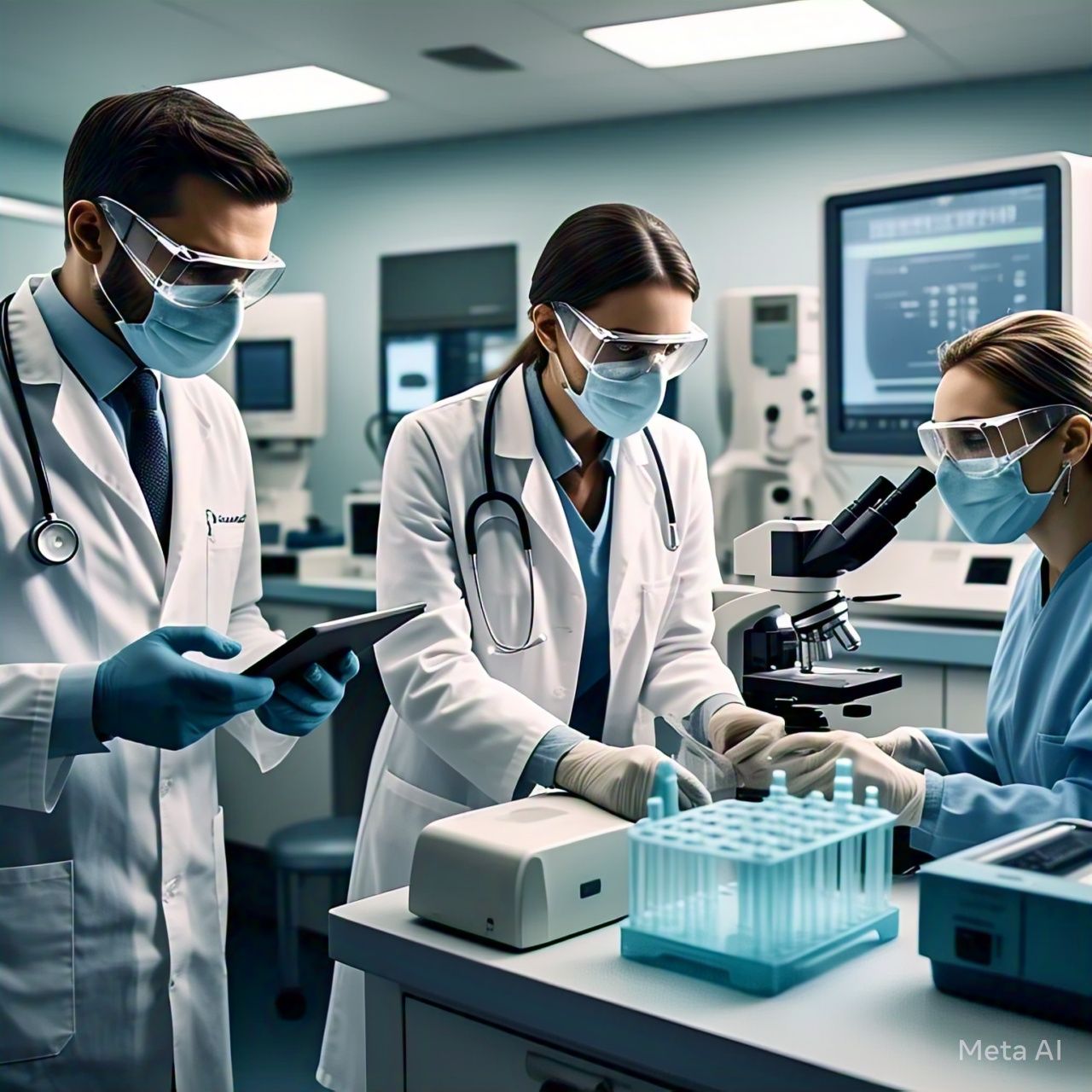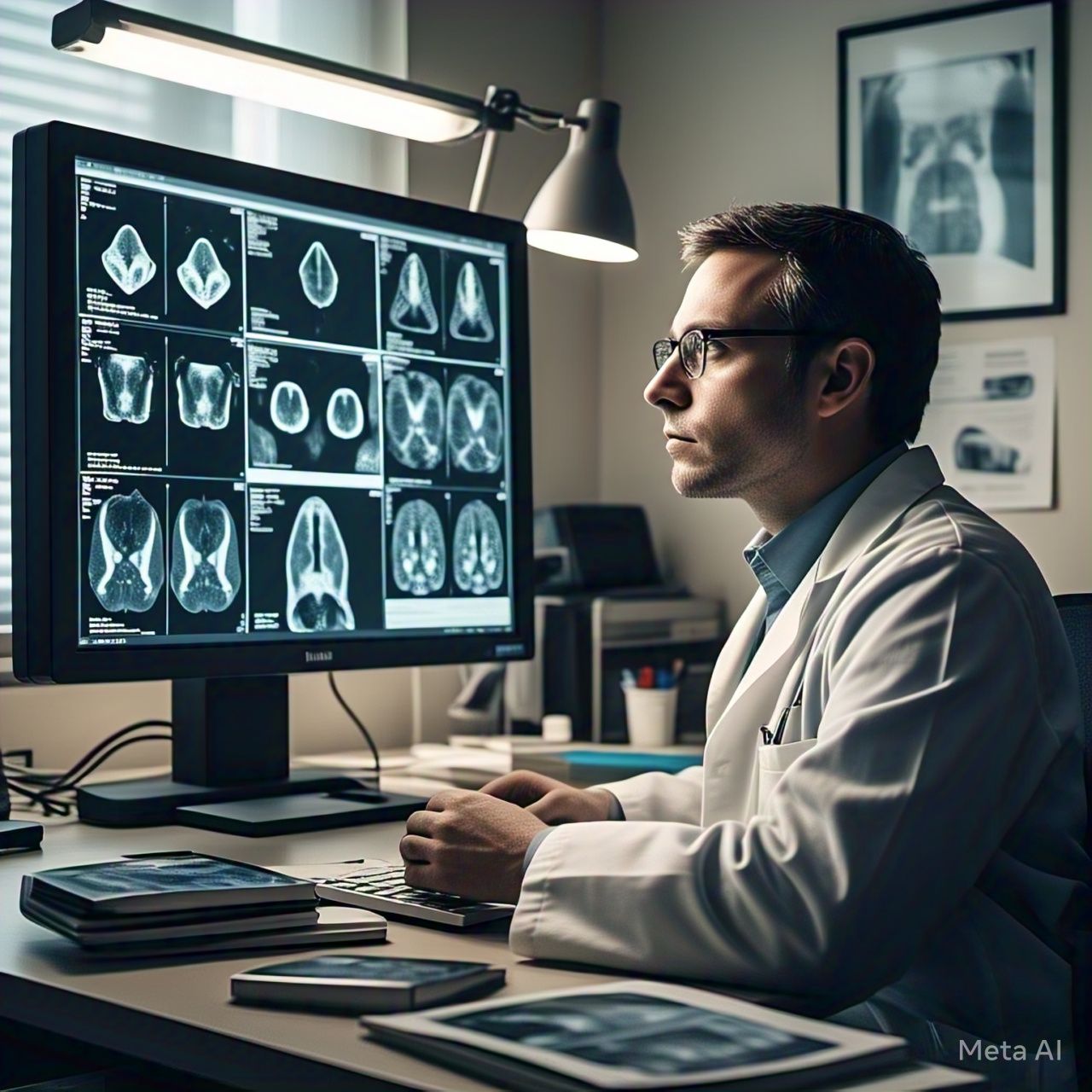Table of Contents
- Introduction
- The Role of AI in Modern Diagnostics
- Key Technologies Behind AI-Powered Diagnostics
- Benefits of AI in Disease Detection
- Challenges and Limitations of AI in Medical Diagnostics
- Real-World Applications of AI in Diagnostics
- The Future of AI in Medical Diagnostics
- Conclusion
- FAQs
Introduction
The healthcare industry is undergoing a technological revolution with the integration of Artificial Intelligence (AI) in medical diagnostics. AI-powered diagnostic tools can detect diseases faster and more accurately than traditional methods, significantly improving patient outcomes. From cancer detection to identifying rare genetic disorders, AI is transforming the way doctors diagnose and treat illnesses. This article explores how AI is revolutionizing disease detection and what the future holds for AI in medical diagnostics.
The Role of AI in Modern Diagnostics
AI in diagnostics involves the use of machine learning algorithms and deep learning models to analyze medical data, including imaging scans, lab tests, and genetic information. The key roles of AI in medical diagnostics include:
- Automating Image Analysis: AI-powered tools analyze X-rays, MRIs, and CT scans to detect abnormalities more accurately.
- Predictive Analytics: AI predicts disease risks based on patient history and genetic data.
- Enhancing Pathology Reports: AI improves the accuracy of lab tests and pathology reports.
- Speeding Up Diagnosis: AI processes large volumes of medical data quickly, reducing diagnostic time.
- Assisting in Rare Disease Detection: AI identifies patterns that human doctors might overlook, aiding in the diagnosis of rare conditions.
Key Technologies Behind AI-Powered Diagnostics
1. Machine Learning (ML) & Deep Learning
- AI algorithms analyze vast datasets to detect disease patterns and improve diagnosis.
2. Natural Language Processing (NLP)
- AI interprets medical records, doctor notes, and research papers for enhanced diagnostics.
3. Computer Vision
- AI-powered imaging tools detect anomalies in medical scans and pathology slides.
4. Big Data & Cloud Computing
- AI leverages cloud-based platforms to analyze and share medical data across healthcare facilities.
5. Internet of Medical Things (IoMT)
- Wearable devices track patient vitals, feeding real-time data into AI-powered diagnostic models.
Benefits of AI in Disease Detection
1. Faster Diagnosis
- AI processes patient data quickly, reducing the time required to detect diseases.
2. Improved Accuracy
- AI minimizes human errors in diagnostics, leading to more precise disease detection.
3. Early Disease Detection
- AI can identify diseases in their early stages, increasing treatment success rates.
4. Cost-Effective Healthcare
- AI reduces the need for expensive and time-consuming diagnostic tests.
5. Enhanced Radiology and Pathology
- AI supports radiologists and pathologists by automating image analysis and improving diagnosis consistency.
6. Personalized Treatment Plans
- AI helps doctors develop customized treatment strategies based on a patient’s genetic and clinical data.
Challenges and Limitations of AI in Medical Diagnostics
1. Data Privacy & Security
- AI relies on large amounts of patient data, raising concerns about data security and privacy.
2. Algorithm Bias & Ethical Issues
- AI models may inherit biases from training data, leading to disparities in healthcare outcomes.
3. Regulatory and Compliance Hurdles
- AI-powered diagnostics must meet strict medical regulations and gain approval from health authorities.
4. Integration with Existing Healthcare Systems
- Implementing AI in hospitals requires seamless integration with traditional diagnostic tools.
5. Reliability & Trust Issues
- Some healthcare professionals are hesitant to fully trust AI-generated diagnoses without human oversight.
Real-World Applications of AI in Diagnostics
1. AI in Cancer Detection
- AI-powered imaging tools like Google’s DeepMind and IBM Watson detect cancerous tumors with high accuracy.
2. AI in Radiology
- AI assists radiologists in interpreting X-rays, MRIs, and CT scans faster and more accurately.
3. AI in Pathology
- AI enhances pathology reports by analyzing tissue samples for early disease detection.
4. AI for COVID-19 Detection
- AI models analyze lung scans and detect COVID-19 infections with high precision.
5. AI in Genetic Disorder Diagnosis
- AI identifies genetic mutations linked to rare diseases and recommends personalized treatments.
6. AI in Neurological Disease Detection
- AI helps detect early signs of Alzheimer’s, Parkinson’s, and other neurological conditions.
The Future of AI in Medical Diagnostics
The future of AI in healthcare is promising, with advancements in:
1. AI-Driven Precision Medicine
- AI will enable more personalized treatments based on genetic and lifestyle factors.
2. AI in Telemedicine
- AI-powered diagnostic tools will enhance remote healthcare and virtual consultations.
3. AI in Mental Health Diagnostics
- AI will assist in detecting early signs of depression and anxiety disorders.
4. Fully Autonomous AI Diagnostic Systems
- AI could eventually operate without human intervention, providing instant diagnoses.
Conclusion
AI-powered diagnostics are revolutionizing the healthcare industry by providing faster, more accurate, and cost-effective disease detection. From radiology to pathology and genetic analysis, AI-driven tools are enhancing medical decision-making and improving patient outcomes. While challenges exist, continued advancements in AI technology promise a future where disease detection is faster, more efficient, and accessible to all.
FAQs
1. How does AI help in disease detection?
AI analyzes medical data, scans, and patient histories to detect diseases quickly and accurately.
2. Can AI replace doctors in diagnostics?
No, AI assists doctors but cannot replace their expertise and human judgment in patient care.
3. What diseases can AI detect?
AI can detect cancers, neurological disorders, genetic diseases, infections, and more.
4. Is AI in diagnostics reliable?
Yes, AI has shown high accuracy in disease detection, but it is best used in combination with human expertise.
5. What is the future of AI in medical diagnostics?
AI will continue advancing in precision medicine, telemedicine, and predictive healthcare, improving patient outcomes worldwide.
Table: Key Benefits of AI in Disease Detection
| Benefit | Description |
|---|---|
| Faster Diagnosis | AI processes patient data quickly, reducing diagnostic time. |
| Improved Accuracy | AI minimizes human errors in disease detection. |
| Early Disease Detection | AI identifies diseases at their earliest stages for better treatment outcomes. |
| Cost-Effective Healthcare | AI reduces the need for expensive diagnostic procedures. |
| Enhanced Radiology | AI automates and improves the accuracy of medical imaging analysis. |
| Personalized Treatment | AI helps develop customized treatment plans based on patient data. |
Citations:
- Johnson, M. (2023). AI in Medical Imaging: Transforming Disease Detection. Healthcare AI Journal.
- Patel, R. (2022). Machine Learning in Diagnostics: Revolutionizing Healthcare. AI & Medicine Reports.
- Chang, S. (2023). The Future of AI in Pathology and Radiology. Medical Technology Review.




